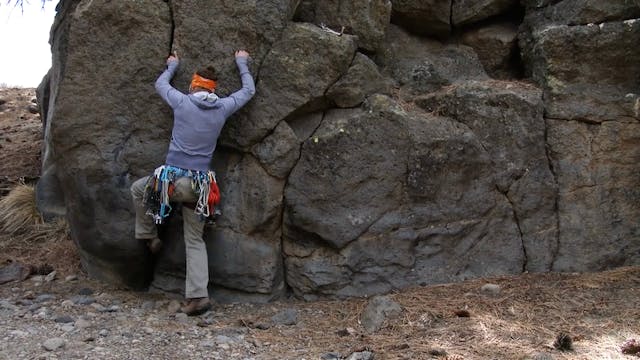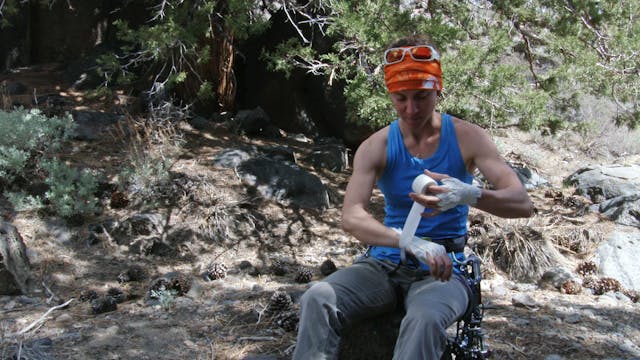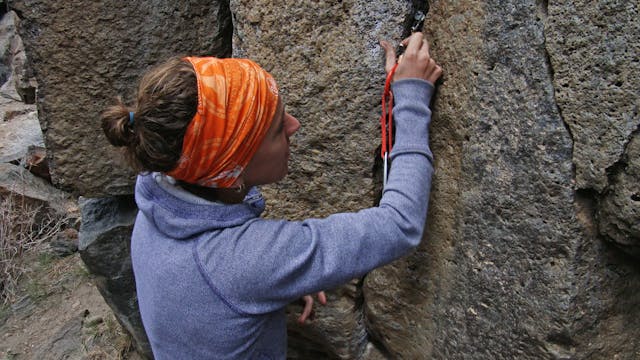Traditional Climbing: 3. Finger Locks vs. Laybacking Cracks
Traditional Climbing
•
2m 7s
In this video we review two techniques for climbing cracks: laybacking vs. using finger locks.
In any style of climbing, good technique will get you further than muscling your way through the climb. This underlines a key difference between laybacking and finger-jamming.
Laybacking - This technique is used in corner crack systems where you have a crack edge to pull on and a wall to push on with your feet. This technique requires a lot of upper body and arm strength, and can be difficult on more vertical facing rock.
Finger Jams - Any time you can use crack climbing techniques instead of power moves, you save lots of energy. Locking your fingers into finger-sized constrictions in the rock is a great way to save your hand strength. Finger locks feel most secure with the index finger on bottom and the hand rotating to cam the fingers into a stronger position, all while using minimal hand and finger strength.
Ring locks are another type of finger jam where you stack your index finger on top of your thumb inside the crack. The rest of your fingers stack, one on top of the other, in the crack, also providing leverage against the rock. When you set the ring lock, pull straight down. This is typically a very strenuous, difficult, and insecure jam. Good luck!
We hope you found this video helpful. Feel free to comment below with questions or thoughts!
Please remember, climbing is inherently dangerous. Climb at your own risk.
Up Next in Traditional Climbing
-
Traditional Climbing: 4. Toe Jamming
In this video we review considerations when toe or foot jamming to climb a crack. The difference between a toe and foot jam is how far your foot goes in the crack.
To jam your feet or toes in cracks, you use a twisting motion. The torque generates friction between your foot and both sides of t...
-
Traditional Climbing: 5. Creating Tap...
In this video we review how to create tape gloves for crack climbing. Tape gloves are used to protect the back of your hand when crack climbing. Climbers will typically use tape gloves when crack climbing for multiple consecutive days, especially on rough or sharp rock (i.e. sandstone) in dryer c...
-
Traditional Climbing: 6. Cam Placemen...
In this video we look at how to place and remove cams.
The most important tip for retrieving a cam is also the simplest: first, try to visualize exactly how the cam was placed, then just reverse that motion to get it back out again.
For example, if the cam is placed in a narrow constricted...


